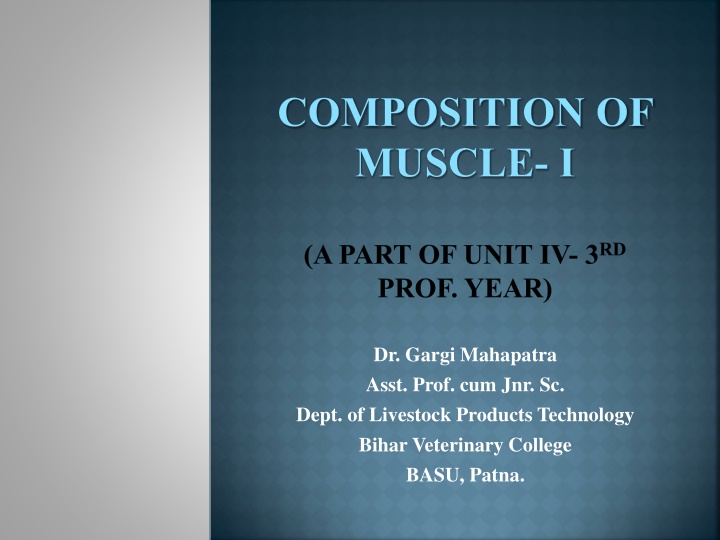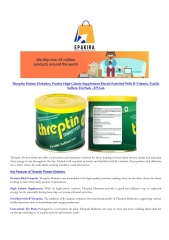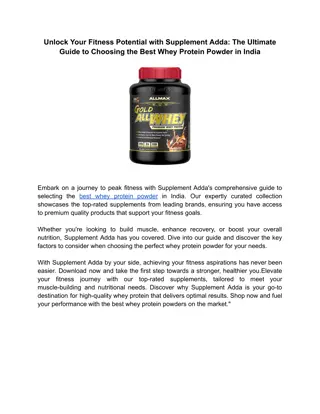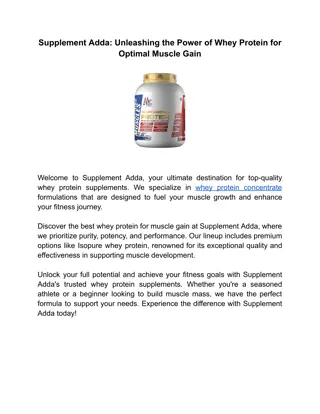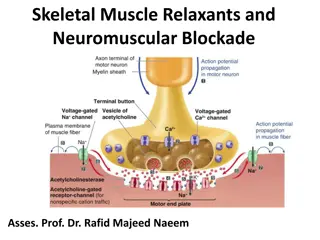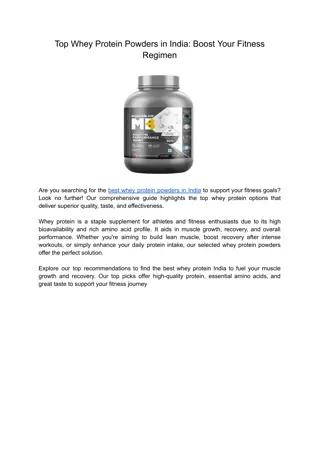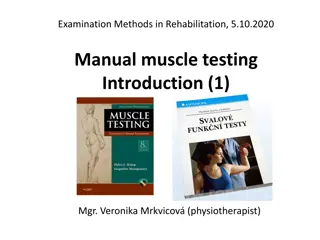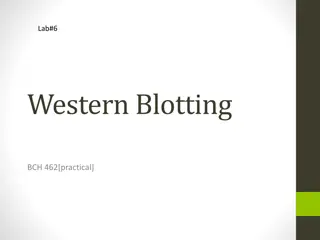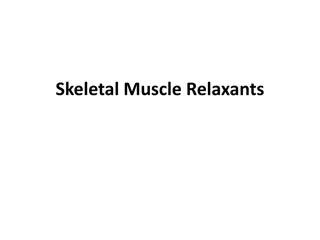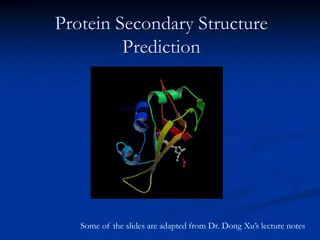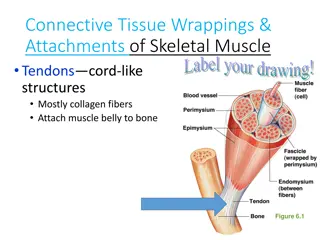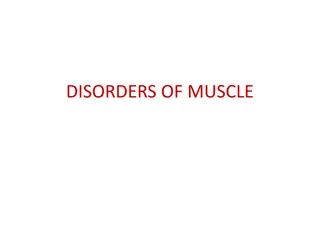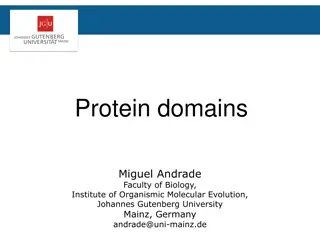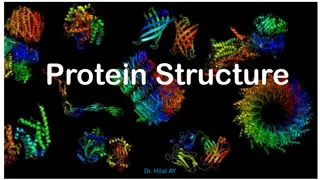Muscle Composition and Protein Structure Overview
This content delves into the composition of muscle tissue, highlighting the distribution of water, solids, and various components such as proteins, lipids, carbohydrates, nitrogenous substances, and more. It provides detailed insights into the protein composition of muscles, emphasizing key proteins like myosin and actin and their structural elements. Explore the distribution of different proteins within muscle tissues and their roles in muscle function.
Download Presentation

Please find below an Image/Link to download the presentation.
The content on the website is provided AS IS for your information and personal use only. It may not be sold, licensed, or shared on other websites without obtaining consent from the author.If you encounter any issues during the download, it is possible that the publisher has removed the file from their server.
You are allowed to download the files provided on this website for personal or commercial use, subject to the condition that they are used lawfully. All files are the property of their respective owners.
The content on the website is provided AS IS for your information and personal use only. It may not be sold, licensed, or shared on other websites without obtaining consent from the author.
E N D
Presentation Transcript
COMPOSITION OF MUSCLE- I (A PART OF UNIT IV- 3RD PROF. YEAR) Dr. Gargi Mahapatra Asst. Prof. cum Jnr. Sc. Dept. of Livestock Products Technology Bihar Veterinary College BASU, Patna.
WATER- 75% & SOLIDS 25% Composition of muscle Protein- 19% Lipids- 2.5% Carbohydrates- 1.2% Nitrogenous Subst.- 1.65% Inorganic Subst.- 0.65% Vitamins- traces
PROTEIN COMPOSITION OF MUSCLES (19.0%) Myofibrillar Sarcoplasmic Connective Tissue (11.50%) (5.50%) (2.0%) Myosin (5.5%) Glyceraldehyde Phosphate Collagen (1.0%) Actin (2.5%) Dehydrogenase (1.2%) Troponin (0.6%) Creatine Kinase(0.5%) Tropomyosin (0.6%) Aldose (0.6%) Actinins (0.5%) Glycolytic Enzymes (2.2%) Nebulin (0.3%) Myoglobin (0.2%) Connectin (0.9%) Hb and extracellular proteins (0.6%) M-line & C Proteins (0.2%) Miscellaneous (0.4%) Elastin (0.05%) Organelles(0.95%)
MYOSIN Constitutes 50-55% of the myofibrillar protein. Proline content lower than actin molecule (5.4%) Each myosin molecule has two identical units. Each unit has a head, collar/hinge and tail. Each molecule has two heavy polypeptide chains and four light polypeptide chains. Trypsin digestion of myosin molecules splits it into Heavy and Light Meromyosin.
MYOSIN CONTD Head and collar forms the heavy meromyosin whereas the tail constitutes the light meromyosin. The light meromyosin portion contains 2 heavy polypeptide chains whereas the heavy meromyosin contains 2 heavy polypeptide chains and 4 light polypeptide chains. Head portion carries ATPase activity and possess actin binding ability.
It is the main protein of the thin filament. Constitutes 20-25% of the myofibrillar protein. Rich in proline (14.7%). Each myosin molecule is surrounded by 6 actin molecules. Actin molecules exist in two forms: G- Actin & F- Actin G-actin molecules polymerize to F-actin molecule and two strands of F-actin spirally coil with one anther to form the super helix. ACTIN
The G-Actin a.k.a. the Globular actin is the monomeric form of the actin molecules and binds to ATP/ADP molecules and Ca ions with high affinity. The G-Actin in presence of salts and ATP polymerizes end to end to form the F-Actin or the Fibrous actin. The length of F-actin is monitored by - actinin and -actinin, which inhibits the polymerization of G-actin molecules. The lateral association of F-actin is promoted by - actinin. The F-actin combines with myosin molecules to form contractile actino-myosin of active/ pre-rigor muscle and inextensible actino- myosin complex of post-rigor muscle. ACTIN CONTD...
OTHER MYOFIBRILLAR PROTEINS Tropomyosin: Constitutes 8-10% of myofibrillar protein. It is fibrous in nature and lies along side the groove of actin super-helix. It provides mechanical stability to the muscle filament Troponin: It also constitutes 8-10% of myofibrillar protein. It is globular in nature. It plays an important role in the contractile process of the muscle. It is composed of three major members known as Troponin C, Troponin I & Troponin T Troponin C has four binding sites forCa ions and forms an equimolar complex with troponin I. Troponin I inhibits actino- myosin interaction in relaxed state, it allows actino-myosin interaction only in presence of Ca ions. Lastly Troponin T binds to tropomyosin and troponin C and links to F-actin.
MYOFIBRILLAR PROTEINS CONTD C-Protein: Constitutes 2-2.5% of myofibrillar protein. They encircle the myosin filament. A total of 18 C-Proteins encircle one myosin filament, 9 bands on each side of H-Zone. M-Protein: It also constitutes 4.0% of myofibrillar protein. It constitutes the M-line. Play an important role in controlling the polarity of molecules in each half of the sarcomere. Nebulin: It is an actin binding protein which is localized to the thin filament of the sarcomere. It regulates thin filament length during sarcomere assembly. Titin: Titin molecule forms elastic filaments linking the ends of thick filaments to the Z-line. Actinin: Constitutes 2-2.5% of myofibrillar protein, promotes lateral association of F-actins. Actinin: Regulates length of actin filament.
SARCOPLASMIC PROTEINS Makes up to 30-35% of the total protein in skeletal muscle. Constitutes several enzymes required for the normal functioning of the muscle cell. These proteins are susceptible to heat.
CONNECTIVE TISSUE Ground Substance + Extra-cellular fibres Viscous soln. of glycoproteins Collagen mucopolysaccharides and Elastin Mucoproteins Reticulin + Substrate of collagen & elastin Hyaluronic + Chondroitin Tropocollagen Acid Sulphate Tropoelastin Found in Cartilage, tendons Synovial fluid & adult bones
CONNECTIVE TISSUE PROTEINS Collagen Elastin Main fibrous protein of the muscle and most common constitute of tendons. Structural unit- tropocollagen Makes 40-60% of the total stroma proteins and 20-25% of the total protein in the body. Contains approx. 33% glycine 14% hydroxiproline and 19% proline. Common in ligaments. It has yellow fibres which can be easily stretched. Contains 8 amino acids residues out of which 2 are desmosine & iso-desmosine; which contributes towards its highly insoluble nature. Nutritive value nil. Highly insoluble to digestive enzymes.
CONNECTIVE TISSUE PROTEINS CONTD . Reticulin It is composed of small fibres which resemble that of collagen except for its intimate association with lipid containing myristic acid. Reticular fibres form a network around blood vessels, neural structure, epithelium etc.
THANK THANK YOU YOU
